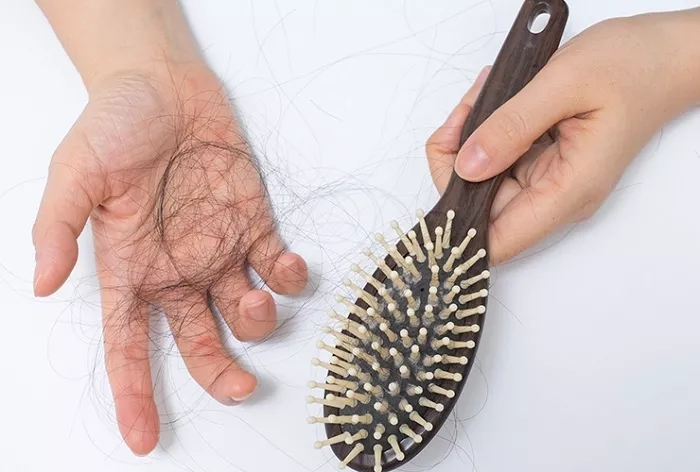Hair loss is a common concern that affects people of all ages and genders. Understanding what constitutes normal hair loss can help alleviate unnecessary worry. There are several factors to consider when determining the normal range of daily hair loss.
The Hair Growth Cycle
Anagen Phase
The hair growth cycle consists of three main phases, with the anagen phase being the active growth period. During this time, the hair follicles are producing new hair cells, and the hair shaft is lengthening. This phase can last anywhere from two to seven years, depending on various factors such as genetics and overall health. On average, about 90% of the hair on our scalp is in the anagen phase at any given time.
Catagen Phase
Following the anagen phase is the catagen phase, which is a short transitional period. It typically lasts only about two to three weeks. During this time, the hair follicle shrinks, and the lower part of the hair separates from the blood supply and the dermal papilla. This marks the end of the active growth of the hair strand.
Telogen Phase
The telogen phase is the resting period of the hair follicle. Around 10% of the hair on our scalp is in this phase at any one time. This phase lasts about three months. At the end of the telogen phase, the old hair is shed, and a new hair begins to grow in the follicle as it re – enters the anagen phase.
Normal Range of Hair Loss
General Guideline
On average, it is considered normal to lose between 50 and 100 hairs per day. This range takes into account the natural hair growth cycle and the shedding of telogen hairs. This normal hair loss is usually not noticeable as new hair is constantly growing in to replace the shed hairs. However, several factors can cause fluctuations within this normal range.
Factors Affecting Normal Hair Loss
Seasonal Changes
Some people may notice slightly more hair loss during certain seasons. For example, in the fall, there can be a small increase in hair shedding. This is believed to be related to changes in daylight and hormonal fluctuations that occur with the changing seasons. The body’s natural rhythms can affect the hair growth cycle, but this seasonal increase usually still remains within the normal range of hair loss.
Hormonal Changes
Hormones play a significant role in hair health. Women may experience increased hair loss during pregnancy, after childbirth, or during menopause. During pregnancy, hormonal changes can cause more hair to remain in the anagen phase, resulting in less shedding. However, after giving birth, many women enter a telogen effluvium phase, where there is an increase in hair shedding as the body readjusts. Similarly, during menopause, the decrease in estrogen levels can lead to thinner hair and potentially more shedding, but again, this usually remains within the normal daily range unless there are other underlying issues.
Stress
Stress can also impact hair loss. High levels of stress can cause the hair follicles to prematurely enter the telogen phase.
This can result in more hair being shed than normal. However, once the stressor is removed or managed, the hair growth cycle usually returns to normal. For example, if someone experiences a particularly stressful event like a job loss or a family crisis, they may notice more hair in their brush or on their pillow for a short period, but this is often a temporary increase within the normal range of hair loss.
When to Be Concerned about Hair Loss
Excessive Hair Loss Beyond the Normal Range
If you notice that you are consistently losing more than 100 hairs per day over an extended period, it may be a sign of an underlying issue. This could be due to a variety of reasons such as nutritional deficiencies, thyroid problems, autoimmune disorders, or certain medications. For example, a diet lacking in essential nutrients like iron, zinc, or biotin can affect the health of the hair follicles and lead to increased hair loss.
Patchy Hair Loss
Patchy hair loss, where there are distinct bald spots on the scalp, is also a cause for concern. This could be a sign of alopecia areata, which is an autoimmune condition where the body’s immune system attacks the hair follicles. Another possible cause of patchy hair loss could be fungal infections of the scalp, which can disrupt the hair growth cycle in the affected areas.
Sudden and Severe Hair Loss
A sudden and severe increase in hair loss, such as large clumps of hair coming out at once, should be evaluated by a medical professional. This could be an indication of a more serious condition like telogen effluvium caused by a major physical or emotional trauma, or it could be a side effect of a new medication. In some cases, chemotherapy drugs can cause significant hair loss, but this is usually a known side effect of the treatment.
Conclusion
In conclusion, while losing between 50 and 100 hairs per day is generally considered normal, it’s important to be aware of any significant changes in your hair loss patterns. Understanding the factors that can affect normal hair loss and being vigilant for signs of excessive or abnormal shedding can help you take appropriate action if there is an underlying issue affecting your hair health. If you are concerned about your hair loss, it’s always a good idea to consult a dermatologist or a healthcare provider who specializes in hair disorders.
Related Topics:

